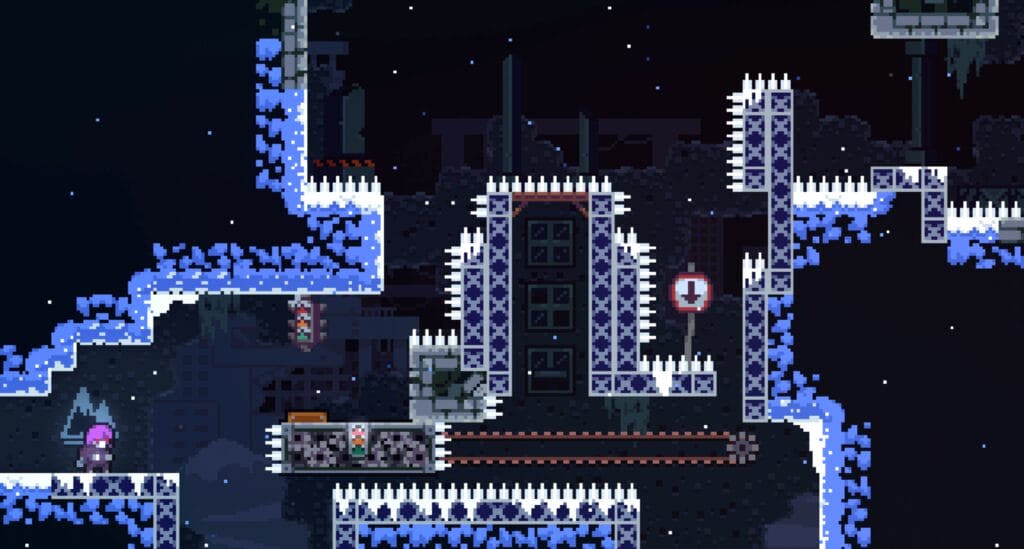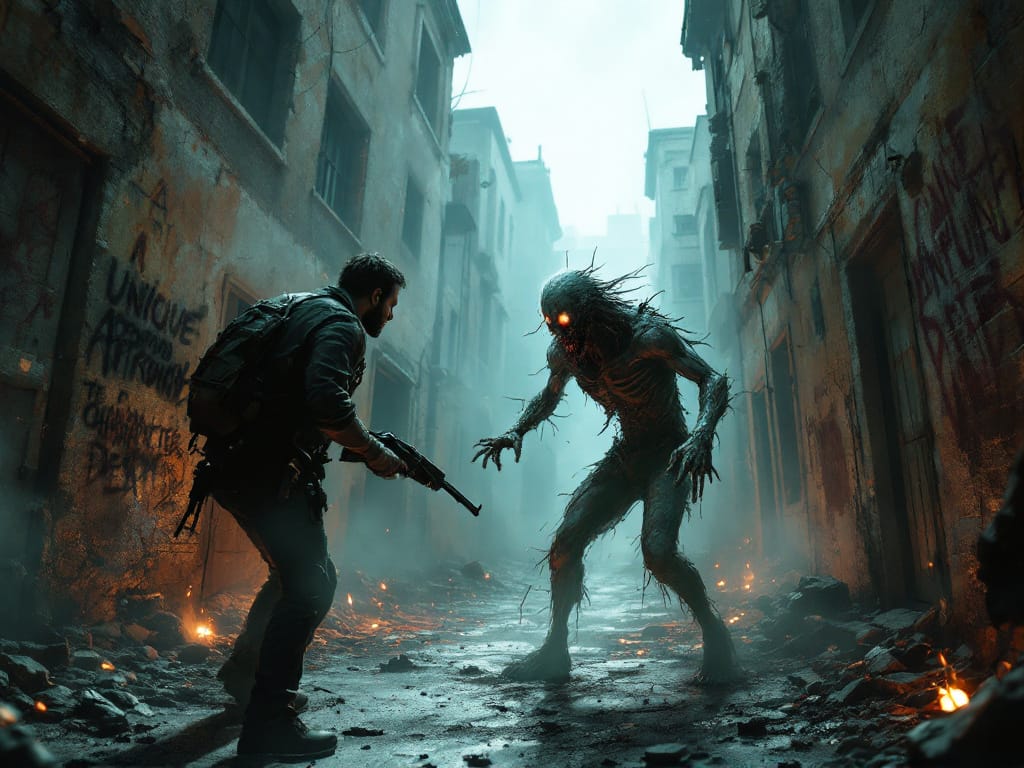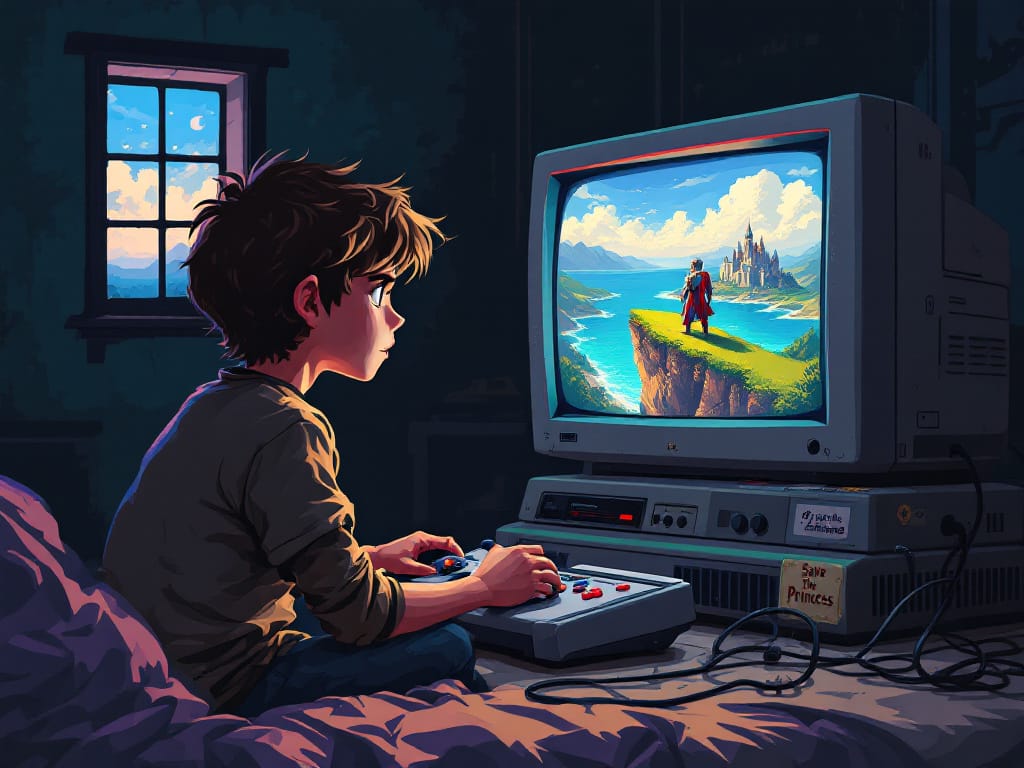Designing a Jrpg game requires a careful blend of creativity, strategy, and attention to detail. First and foremost, it is essential to establish a captivating storyline that will immerse players in a rich and engaging narrative. This can be achieved through the development of complex characters with unique attributes and motivations. Additionally, an intricate world must be created, complete with stunning visuals and immersive environments.
The gameplay mechanics should be carefully crafted to provide both challenge and enjoyment for players, incorporating elements such as turn-based combat, character progression, and exploration. Balancing these components is crucial to ensure an enjoyable gaming experience. Furthermore, the music and sound effects play a significant role in enhancing the overall atmosphere of the game. By combining all these elements with meticulous attention to detail throughout the design process, developers can create a Jrpg game that captivates players and leaves them eager for more adventures in the virtual worlds they have created.
The secrets of a good JRPG Game Design

1. Introduction to JRPG Game Design
1.1 The popularity of JRPG games and their unique design elements.
JRPG games have gained immense popularity over the years, captivating gamers with their unique design elements. With their rich storytelling, intricate character development, and strategic turn-based combat, these games offer a truly immersive experience. The popularity of JRPGs can be attributed to their ability to transport players into fantastical worlds filled with captivating narratives and vibrant characters. The design elements of JRPGs are often characterized by their visually stunning graphics, intricate plotlines, and memorable soundtracks. Players are drawn to the deep and complex storylines that unfold throughout the game, as well as the challenging battles that require strategic thinking and careful planning. From the epic adventures of Final Fantasy to the emotional journeys of Persona, JRPGs continue to captivate players across the globe with their unique blend of gameplay mechanics and compelling narratives.
1.2 The purpose of the blog post: to provide a step-by-step guide for beginners on how to design a JRPG game.
In this blog post, we will provide a step-by-step guide for beginners on how to design a JRPG game. Whether you are a budding game developer or simply interested in understanding the intricacies of JRPG game design, this guide will provide you with valuable insights and tips to get started. From establishing a captivating storyline to designing immersive worlds and gameplay mechanics, we will cover all the essential elements required to create a successful JRPG game. So, let’s dive in and explore the exciting world of JRPG game design!
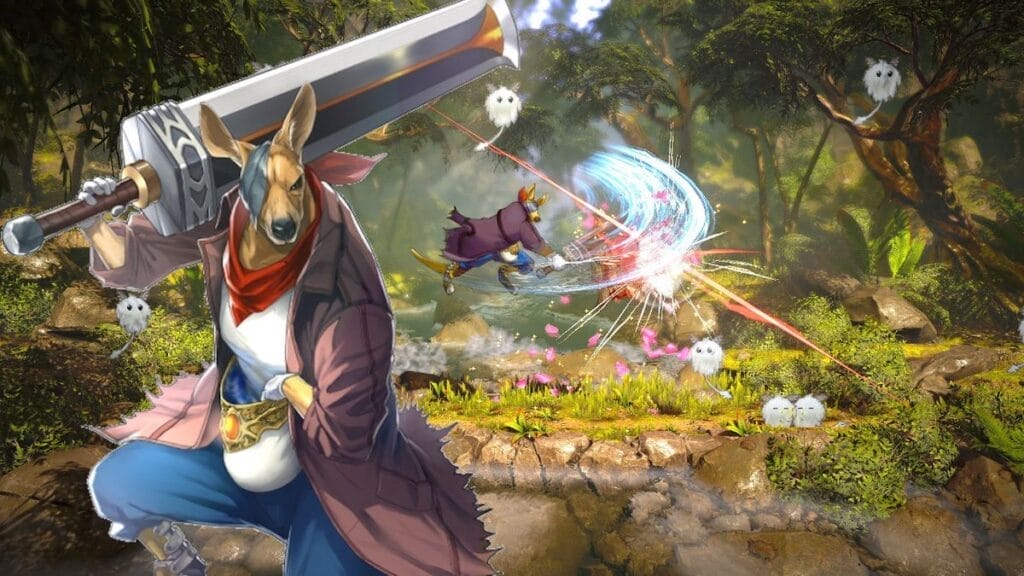
1.2.1. Understanding the Basics of JRPG Game Design
JRPG, short for Japanese Role-Playing Game, is a genre of video games that originated in Japan and has since gained global popularity. These games are known for their distinct design elements and gameplay mechanics. Here are some key characteristics of JRPG games:
1. Story-driven: JRPGs are heavily focused on storytelling and often feature complex narratives that unfold throughout the game. The storylines can range from epic adventures to personal journeys, and they often incorporate themes such as friendship, love, and personal growth.
2. Turn-based combat: Many JRPGs use a turn-based combat system, where players take turns to choose actions for their characters. This allows for strategic thinking and planning, as players must consider the strengths and weaknesses of their characters and the enemies they face.
3. Character development: JRPGs often feature a wide cast of characters, each with their own unique abilities, personalities, and backstories. As players progress through the game, they can level up and customize their characters, unlocking new abilities and enhancing their skills.
4. Exploration and world-building: JRPGs typically feature expansive and immersive worlds for players to explore. These worlds are often filled with hidden treasures, side quests, and non-playable characters (NPCs) that provide additional depth to the game’s lore and story.
5. Role-playing elements: As the name suggests, JRPGs allow players to assume the roles of characters within the game’s world. This means that players can make choices and decisions that affect the outcome of the story and their character’s development.
6. Memorable soundtracks: JRPGs are known for their iconic soundtracks, composed to enhance the atmosphere and emotions of the game. These soundtracks often become beloved by fans and contribute to the overall immersive experience.
Understanding these basic characteristics of JRPG games will provide a solid foundation for designing your own game in this genre. In the next sections, we will delve deeper into the different aspects of JRPG game design, starting with establishing a captivating storyline.

1.2.2 The importance of engaging storylines, memorable characters, and immersive worlds.
Engaging Storylines:
One of the most important aspects of JRPG game design is crafting an engaging and captivating storyline. The storyline serves as the backbone of the game, driving the player’s motivation and providing a sense of purpose and direction. A well-crafted storyline will keep players invested in the game, eager to uncover the next plot twist or discover the resolution to a mystery. It is essential to create a coherent narrative that progresses at a steady pace, balancing moments of excitement, tension, and emotional depth.
Memorable Characters:
Another key element in JRPG game design is the creation of memorable characters. Characters play a crucial role in bringing the story to life and forming emotional connections with players. Each character should have a distinct personality, backstory, and motivations that drive their actions throughout the game. It is important to develop well-rounded and relatable characters that players can root for and form attachments to. Additionally, character development should be a significant part of the gameplay experience, allowing players to witness their growth and progression.
Immersive Worlds:
Immersive world-building is another essential aspect of JRPG game design. The game world should be meticulously crafted, with attention to detail and a sense of consistency. A well-designed world will transport players into a virtual realm, allowing them to explore diverse environments, interact with various NPCs, and uncover secrets and hidden treasures. The world should feel alive and dynamic, with a rich history, unique cultures, and a sense of exploration and discovery.
By focusing on creating engaging storylines, memorable characters, and immersive worlds, game designers can create JRPGs that captivate players and provide a truly immersive gaming experience. These elements work together to create a cohesive and compelling game that keeps players invested and eager to explore more of the virtual world.

2. Step 1: Defining the Game Concept
2.1 The importance of a strong game concept as the foundation of JRPG design.
A strong game concept is crucial as the foundation of JRPG design because it serves as the guiding principle for the entire development process. It provides a clear vision and direction for the game, ensuring that all elements, such as the storyline, characters, gameplay mechanics, and world-building, align with the intended experience.
Here are some reasons why a strong game concept is important:
1. Focus and clarity: A well-defined game concept helps the development team stay focused on the core idea and avoid feature creep or diverging from the intended vision. It provides a clear direction for the team to follow, ensuring that everyone is on the same page and working towards a common goal.
2. Player engagement: A strong game concept is designed with the target audience in mind. It takes into account player preferences, interests, and expectations, ensuring that the game resonates with the intended audience. By understanding the target audience and creating a concept that appeals to them, developers can increase the chances of player engagement and enjoyment.
3. Unique identity: In a crowded market, a strong game concept helps a JRPG stand out from the competition. By offering a unique and compelling experience, it can attract players and generate interest and excitement. A clear concept allows developers to differentiate their game from others and create a memorable and distinct identity.
4. Coherence and consistency: A well-defined game concept ensures that all elements of the game, such as the story, characters, gameplay mechanics, and art style, work together harmoniously. It creates a sense of coherence and consistency throughout the game, enhancing the overall player experience.
5. Efficiency in development: A strong game concept provides a roadmap for the development process, making it more efficient and streamlined. By having a clear understanding of the desired outcome, developers can make informed decisions and prioritize tasks effectively. This can result in a smoother development process and help meet deadlines and budget constraints.
In summary, a strong game concept is essential as the foundation of JRPG design. It provides focus, clarity, player engagement, a unique identity, coherence, and efficiency in development. By establishing a solid concept, developers can set the stage for creating a compelling and successful JRPG.
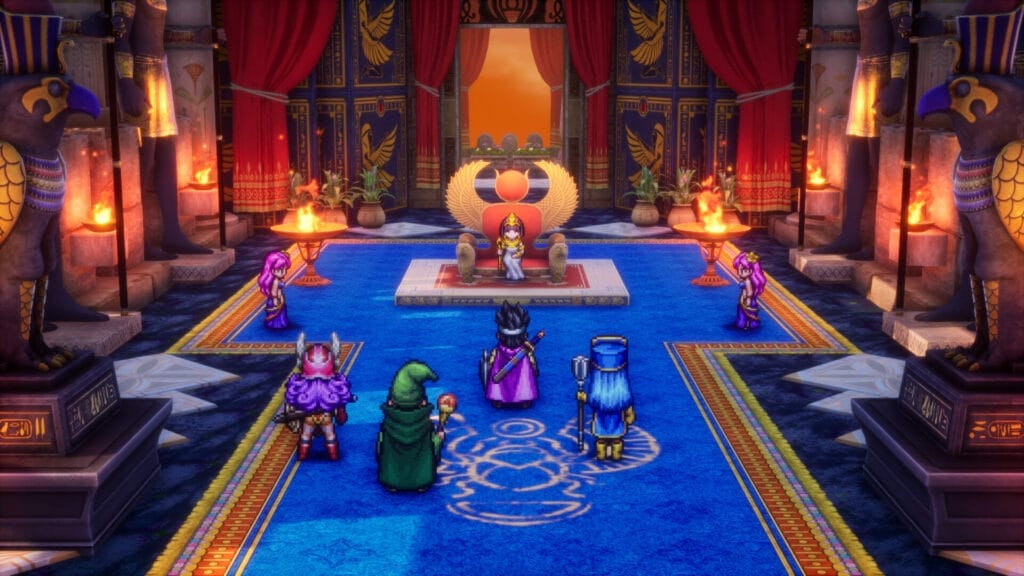
2.2 How to brainstorm and develop a unique game concept, considering themes, settings, and gameplay mechanics.
To brainstorm and develop a unique game concept for your JRPG, consider the following elements: themes, settings, and gameplay mechanics.
1. Themes: Start by identifying the themes you want your game to explore. Themes can range from classic fantasy elements like good vs. evil or the hero’s journey, to more complex themes like identity, redemption, or the consequences of choices. Brainstorm different themes that resonate with you and consider how they can be incorporated into your game’s narrative and gameplay.
2. Settings: Next, think about the setting of your game. Will it take place in a fantastical realm, a futuristic dystopia, or a historical period? Consider the visual aesthetics, the atmosphere, and the lore of the world you want to create. Brainstorm different settings that align with your chosen theme and think about how they can enhance the overall experience for players.
3. Gameplay Mechanics: JRPGs are known for their strategic turn-based combat, character progression systems, and exploration of vast worlds. Consider how you can incorporate these mechanics into your game while adding unique twists of your own. Think about the balance between challenge and accessibility, and how the gameplay can support and enhance the narrative.
Once you have brainstormed ideas for each of these elements, it’s time to start combining them to create a cohesive game concept. For example, you might decide to create a JRPG set in a post-apocalyptic world where the theme of survival and hope is explored. The gameplay mechanics could involve scavenging for resources, building alliances with other survivors, and engaging in turn-based battles against hostile factions.
Remember to keep your target audience in mind while developing your game concept. Consider what would appeal to JRPG fans and what unique elements you can bring to the genre. By combining interesting themes, captivating settings, and innovative gameplay mechanics, you can create a unique and engaging game concept for your JRPG.
3. Step 2: Creating Compelling Characters
3.1 The significance of well-developed and relatable characters in JRPG games.
Well-developed and relatable characters are crucial in JRPG games as they play a significant role in engaging players and immersing them in the game’s world. These characters serve as the main vehicle for storytelling, allowing players to connect with and invest in the narrative.
Firstly, well-developed characters have depth and complexity, making them more interesting and memorable. They have their own unique personalities, motivations, and backstories that drive their actions and decisions throughout the game. This depth adds layers to the narrative and keeps players invested in the characters’ journeys.
Relatability is another important aspect of compelling characters. When players can see parts of themselves or their own experiences reflected in a character, it creates a stronger emotional connection. This connection enhances player engagement and investment in the story, as they become more emotionally invested in the characters’ successes and failures.
Strong character development also allows for character growth and transformation throughout the game. As players progress through the story, they witness characters overcoming obstacles, facing their flaws, and evolving as individuals. This growth provides a sense of satisfaction and fulfillment, as players feel connected to the characters’ journeys and are rewarded for their investment.
Additionally, well-developed characters can evoke a range of emotions in players. Whether it’s feeling joy when a character achieves their goals, empathy when they face hardships, or even frustration when they make mistakes, these emotional connections enhance the overall gaming experience and make the story more impactful.
Lastly, compelling characters contribute to the game’s replay value. When players form strong connections with characters, they often want to experience their stories again or explore different outcomes. This desire for deeper engagement encourages players to replay the game, increasing its longevity and enjoyment.
In conclusion, well-developed and relatable characters are essential in JRPG games. They drive the narrative, create emotional connections, provide growth and transformation, and enhance the overall gaming experience. By investing time and effort into character development, JRPG games can captivate players and leave a lasting impression.
3.2 Tips on designing memorable protagonists, allies, and antagonists, including their backstories, personalities, and motivations.
Designing memorable protagonists, allies, and antagonists is crucial in creating a compelling JRPG game. Here are some tips to help you develop these characters:
1. Protagonists:
– Backstory: Create a detailed and meaningful backstory for your protagonist. Consider their origins, upbringing, and any significant events that have shaped them. This backstory should connect to the game’s overall theme and provide a strong foundation for the character’s motivations and actions.
– Personality: Give your protagonist a distinct and relatable personality. Consider their strengths, weaknesses, and quirks. Think about how their personality traits will affect their interactions with other characters and drive their decisions throughout the game.
– Motivation: Determine what motivates your protagonist. What is their ultimate goal or desire? This motivation should be clear and compelling, providing a driving force for the character’s actions and decisions.
2. Allies:
– Diversity: Create a diverse cast of allies with different backgrounds, skills, and personalities. This diversity adds depth to the game’s world and allows for unique dynamics between characters.
– Backstories: Develop backstories for your allies that complement the protagonist’s journey. Consider how their past experiences have shaped them and how they contribute to the overall narrative.
– Relationships: Explore the relationships between the protagonist and their allies. Develop strong bonds, conflicts, and growth opportunities that allow for character development and emotional connections.
3. Antagonists:
– Complexity: Build complex and multi-dimensional antagonists. Avoid one-dimensional “evil” characters and instead provide them with motivations and justifications for their actions. This complexity adds depth and intrigue to the story.
– Contrast: Create a contrast between the protagonist and the antagonist. This can be done through conflicting goals, ideologies, or personalities. The contrast adds tension and creates engaging conflicts throughout the game.
– Backstory: Develop a compelling backstory for your antagonist that explains their motivations and actions. Consider their past experiences or traumas that have influenced their current state.
Remember, character development is an ongoing process. Allow your characters to grow and change throughout the game, providing opportunities for redemption or transformation. Additionally, make sure to give your characters strong dialogue and interactions that showcase their personalities and motivations.
By designing memorable protagonists, allies, and antagonists with well-developed backstories, relatable personalities, and clear motivations, you can create a cast of characters that will captivate players and enhance the overall gaming experience.
4. Step 3: Crafting an Engaging Storyline
4.1 The role of storytelling in JRPG games and how it impacts player immersion.
Storytelling plays a crucial role in JRPG games as it greatly impacts player immersion. A well-crafted storyline can draw players into the game world, making them feel like they are part of the narrative and invested in the outcome. Here are some ways storytelling enhances player immersion in JRPG games:
1. Worldbuilding: A compelling storyline sets the stage for the game’s world. It establishes the setting, history, and lore, creating a rich and immersive environment for players to explore. Through detailed descriptions, unique cultures, and intriguing locations, the story helps players feel like they are truly immersed in a vibrant and living world.
2. Character Development: Storytelling allows for the development of complex and relatable characters. Through their interactions, dialogue, and personal journeys, players get a glimpse into their motivations, fears, and aspirations. This depth of characterization makes players feel connected to the characters, fostering emotional investment and enhancing the overall gaming experience.
3. Narrative Structure: A well-structured storyline keeps players engaged and invested in the game. By utilizing plot twists, unexpected events, and cliffhangers, the story creates anticipation and excitement, motivating players to continue playing to uncover what happens next. This narrative tension adds to the immersive experience, making players feel like they are a part of an unfolding epic tale.
4. Player Agency: While storytelling guides the overall narrative, JRPG games often incorporate player choices and branching paths. These choices can impact the storyline, allowing players to shape the outcome and feel a sense of agency. This interactive storytelling element deepens player immersion as they feel a personal investment in the choices they make and the consequences that follow.
5. Emotional Impact: A well-told story evokes a range of emotions in players. Whether it’s joy, sadness, anger, or surprise, these emotional connections heighten player immersion and investment in the game. They make players care about the characters and the outcomes, creating a more impactful and memorable gaming experience.
Overall, storytelling is a powerful tool in JRPG games that enhances player immersion by creating a detailed and immersive world, developing complex characters, providing a well-structured narrative, incorporating player agency, and evoking emotional responses. By carefully crafting the storyline, game developers can create a captivating and immersive experience that keeps players engaged throughout their gaming journey.

4.2 Guidance on creating a captivating narrative, including plot structure, plot twists, and character arcs.
Creating a captivating narrative involves several key elements, including plot structure, plot twists, and character arcs. Here are some tips to help you develop a compelling storyline:
1. Plot Structure:
– Introduction: Start your story by introducing the main characters and setting the stage for the conflict or quest that will drive the narrative.
– Rising Action: Build tension and conflict as the protagonist faces obstacles and challenges on their journey. This can include battles, puzzles, and encounters with allies and enemies.
– Climax: Reach a pivotal moment where the conflict comes to a head. This should be a high-stakes and emotionally charged moment that pushes the protagonist to their limits.
– Falling Action: Begin resolving the conflict and tying up loose ends. Show the consequences of the climax and start leading towards the resolution.
– Resolution: Bring the story to a satisfying conclusion, providing closure for the protagonist and the overall narrative.
2. Plot Twists:
– Surprise the audience: Incorporate unexpected twists and turns in the story to keep players engaged and guessing. These twists can reveal hidden motivations, introduce new conflicts, or turn allies into enemies.
– Foreshadowing: Drop subtle hints and clues throughout the story that foreshadow upcoming plot twists. This can create a sense of anticipation and make the twists feel more organic and satisfying.
3. Character Arcs:
– Protagonist: Plan a character arc for your main character where they start with certain flaws or limitations and gradually grow and change throughout the story. This can include overcoming personal fears, learning new skills, or challenging their beliefs.
– Supporting Characters: Give your supporting characters their own arcs and development. Allow them to face their own challenges and grow alongside the protagonist. This adds depth and complexity to the overall narrative.
Remember to balance the pacing of your story, allowing for moments of tension and excitement, as well as quieter moments for character development and reflection. Additionally, ensure that the conflicts and challenges faced by the characters are meaningful and impactful, driving the story forward and providing opportunities for growth and change.
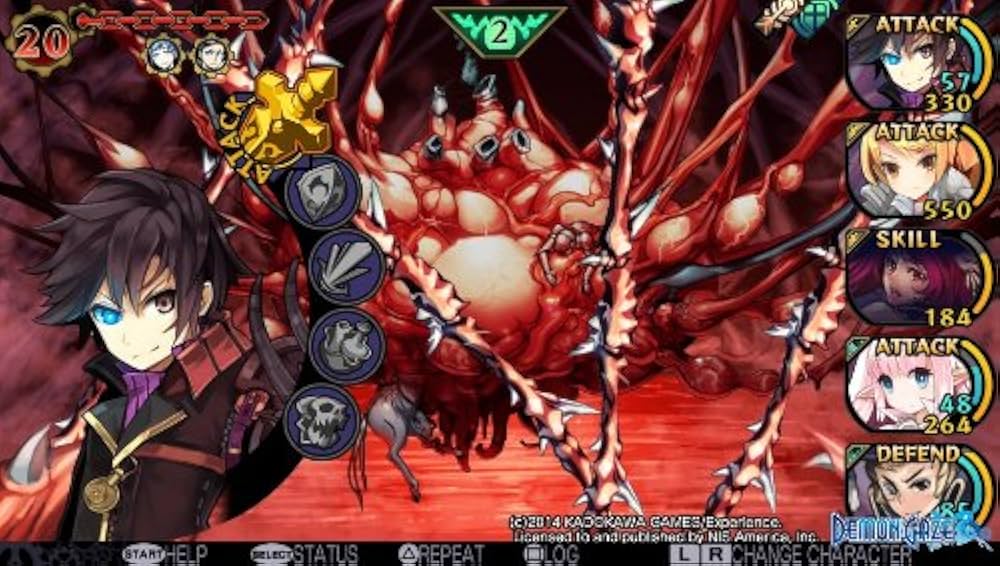
5. Step 4: Designing Gameplay Mechanics
5.1 The importance of strategic and turn-based combat systems in JRPG games.
Strategic and turn-based combat systems are a fundamental aspect of JRPG games that contribute to the overall gaming experience. Here are a few reasons why these combat systems are important:
1. Strategic Decision-Making: In strategic and turn-based combat systems, players have time to plan and strategize their actions. This adds a layer of depth to the gameplay as players must consider various factors such as enemy strengths and weaknesses, party composition, and available resources. This strategic decision-making aspect engages players and makes them feel more involved in the battles.
2. Tactical Planning: Turn-based combat systems allow players to carefully plan their moves and actions. This involves analyzing the battlefield, predicting enemy movements, and selecting the most effective abilities or attacks. By incorporating tactical planning, JRPG games encourage players to think critically and strategically, enhancing the overall gameplay experience.
3. Party Coordination: JRPG games often feature a party of characters with different abilities and roles. Strategic combat systems allow players to coordinate and utilize the strengths of each party member effectively. This promotes teamwork and synergy among the characters, creating a sense of camaraderie and enhancing the overall gameplay experience.
4. Resource Management: Turn-based combat systems often involve managing resources such as health, magic points, and items. Players must make strategic decisions on when to use these resources and when to conserve them for more challenging battles. This resource management aspect adds another layer of depth and challenge to the gameplay, keeping players engaged and invested.
5. Skill Progression: The strategic and turn-based nature of combat systems in JRPG games allows for a gradual progression of skills and abilities. As players progress through the game, they unlock new abilities, upgrade existing ones, and learn advanced tactics. This sense of skill progression gives players a sense of accomplishment and motivates them to continue playing.
Overall, strategic and turn-based combat systems in JRPG games provide players with a deep and engaging gameplay experience. They encourage strategic thinking, tactical planning, and resource management, all of which contribute to the immersive and enjoyable nature of these games.
5.2 Tips on designing engaging gameplay mechanics, such as exploration, puzzles, and character progression.
When designing gameplay mechanics for your game, it’s important to keep players engaged and provide them with satisfying experiences. Here are some tips for designing engaging gameplay mechanics:
1. Exploration: Create a world that encourages exploration. Include hidden areas, secrets, and rewards for players who take the time to explore. Make sure there are interesting and diverse environments to discover, each with its own unique challenges and rewards.
2. Puzzles: Incorporate puzzles into your game to challenge players’ problem-solving skills. Make sure the puzzles are varied in difficulty and complexity, and provide hints or clues for players who may be stuck. Consider incorporating different types of puzzles, such as logic puzzles, riddles, or environmental puzzles, to keep gameplay fresh and engaging.
3. Character Progression: Design a character progression system that allows players to grow and develop their characters throughout the game. This can include leveling up, unlocking new abilities or skills, and acquiring new equipment or items. Make sure the progression feels rewarding and impactful, providing players with a sense of accomplishment and making them feel more powerful as they progress.
4. Variety in Gameplay: Incorporate a variety of gameplay mechanics to keep players engaged and interested. This can include different types of combat encounters, mini-games, side quests, or even non-combat activities such as crafting or fishing. By providing a diverse range of gameplay experiences, you can cater to different player preferences and keep the game feeling fresh and exciting.
5. Feedback and Rewards: Provide clear and meaningful feedback to players when they successfully complete a task or overcome a challenge. This can include visual and audio cues, as well as tangible rewards such as experience points, items, or story progression. Positive reinforcement and rewards help to motivate players and make them feel accomplished, driving them to continue playing.
6. Balance Challenge and Progression: Strike a balance between providing challenging gameplay and a sense of progression. Make sure challenges are appropriately scaled to the player’s abilities and provide opportunities for them to improve and grow. Gradually increase the difficulty as the player progresses, while still ensuring a sense of achievement and progress.
7. Playtest and Iterate: Continuously playtest your game and gather feedback from players. This will help you identify areas where gameplay mechanics can be improved or refined. Iterate on your design based on player feedback to ensure that the gameplay remains engaging and enjoyable.
By incorporating these tips into your game design, you can create engaging gameplay mechanics that keep players invested and immersed in your game.
6. Step 5: Building Immersive Worlds
6.1 The significance of detailed and immersive game worlds in JRPG design.
Detailed and immersive game worlds are of significant importance in JRPG design for several reasons:
1. World Building: JRPGs often have rich and complex narratives that require a well-developed game world to support them. Immersive game worlds help to create a sense of believability and depth, enabling players to become fully engrossed in the story and the game’s universe.
2. Player Engagement: A detailed and immersive game world can greatly enhance player engagement. When players feel like they are exploring a living, breathing world with its own history, culture, and inhabitants, they are more likely to feel invested in their journey and the characters they encounter.
3. Exploration and Discovery: JRPGs often emphasize exploration as a key gameplay element. A detailed game world provides players with a sense of wonder and excitement as they uncover new areas, uncover secrets, and discover hidden treasures. This sense of exploration and discovery adds to the overall enjoyment and satisfaction of playing a JRPG.
4. Atmosphere and Ambience: Immersive game worlds can create a unique atmosphere and ambience that contributes to the overall experience. Whether it’s a lush fantasy realm, a post-apocalyptic wasteland, or a futuristic cityscape, the visuals, sound design, and environmental storytelling can transport players to another world and heighten their emotional connection to the game.
5. Role-Playing Experience: JRPGs are often known for their emphasis on role-playing and character development. A detailed and immersive game world provides a rich backdrop for players to create and develop their characters. Players can feel like they are truly inhabiting the game world, making choices that impact the story and interacting with various NPCs and factions.
6. Player Agency: Immersive game worlds offer players a sense of agency and freedom. By providing a wide range of environments, quests, and activities, players can choose how they want to navigate and interact with the game world. This freedom of choice enhances player immersion and allows them to shape their own unique experiences within the game.
Overall, detailed and immersive game worlds play a crucial role in JRPG design by enhancing player engagement, supporting narrative depth, facilitating exploration, and creating a sense of immersion and agency. They contribute to the overall enjoyment and longevity of the gaming experience, making JRPGs a beloved genre among players worldwide.
6.2 The elements of world-building, including creating diverse locations, cultures, and lore.
World-building is a crucial aspect of creating immersive and engaging game worlds in JRPG design. It involves creating diverse locations, cultures, and lore that contribute to the overall depth and believability of the game world. Here are some elements to consider when world-building:
1. Diverse Locations: A well-built game world should have a variety of locations that offer distinct visual aesthetics, climates, and ecosystems. These locations can include lush forests, barren deserts, bustling cities, mysterious dungeons, or ethereal realms. Each location should have its own unique characteristics and challenges, providing players with a sense of exploration and discovery.
2. Cultures and Societies: Developing diverse cultures and societies within your game world adds depth and richness to the overall experience. Consider creating different races, factions, religions, and social structures. This diversity can be reflected in the architecture, clothing styles, languages, and customs of the various groups inhabiting the game world.
3. Lore and History: Crafting a detailed lore and history for your game world helps establish a sense of depth and continuity. Create legends, myths, and historical events that shape the current state of the world. This lore can be conveyed through in-game books, dialogue with NPCs, or environmental storytelling. It adds layers of intrigue and makes the world feel lived-in.
4. NPCs and Interactions: Populate your game world with non-playable characters (NPCs) that have their own personalities, motivations, and stories. NPCs can provide quests, sell items, or offer information that expands the lore and world-building. Interactions with NPCs should feel meaningful and contribute to the player’s understanding of the world.
5. Environmental Details: Pay attention to the small details that make your game world feel alive. Consider the flora and fauna, weather patterns, day-night cycles, and environmental sounds. These details create a sense of immersion and realism, making the world feel dynamic and responsive.
6. Consistency and Internal Logic: Ensure that the elements of your game world are consistent and follow an internal logic. The rules and physics of your world should make sense within the established lore and mechanics. This consistency helps players suspend their disbelief and fully immerse themselves in the game world.
By focusing on these elements of world-building, you can create a game world that feels rich, diverse, and engaging. This will enhance the overall player experience and make your JRPG stand out among players.
7. Conclusion : The key steps in designing a JRPG game for beginners.
Designing a JRPG game can be a complex process, but here are some key steps for beginners to consider:
1. Conceptualize: Start by brainstorming ideas for your game’s story, characters, and world. Think about the themes, setting, and overall tone you want to convey.
2. Create a Game Design Document: Write a detailed document that outlines the gameplay mechanics, features, and overall structure of your game. This document will serve as a blueprint for your development process.
3. Character Design: Develop memorable and well-rounded characters that players can connect with. Consider their backstories, motivations, and growth throughout the game.
4. World-building: Create a detailed game world with diverse locations, cultures, and lore. Consider the environments, societies, and histories that make up your world.
5. Gameplay Mechanics: Determine the core mechanics of your game, such as combat systems, leveling systems, and exploration mechanics. Make sure they are balanced and provide a satisfying gameplay experience.
6. Visual Design: Decide on the visual style of your game, including character designs, environments, and UI elements. Consider the art direction that best suits your game’s atmosphere and aesthetics.
7. Sound Design: Plan the audio elements of your game, including background music, sound effects, and voice acting. Sound design plays a crucial role in creating an immersive and engaging experience.
8. Iterative Development: Begin the development process by creating prototypes and testing them with a small group of players. Use their feedback to refine and improve your game.
9. QA Testing: Conduct thorough quality assurance testing to identify and fix any bugs, glitches, or balancing issues in your game. Ensure that the gameplay is smooth and enjoyable for players.
10. Release and Marketing: Once your game is polished and ready, prepare for its release. Create a marketing strategy, build a community around your game, and promote it through various channels to reach your target audience.
Remember, designing a JRPG game requires dedication, creativity, and attention to detail. Don’t be afraid to iterate and make changes along the way. With time and effort, you can create a memorable and engaging JRPG experience for players to enjoy.
So, what are you waiting for? Unleash your creativity and dive into the exciting world of JRPG game design. With these steps as a guide, you can start creating your own unique and captivating game world. Whether you’re a beginner or an experienced game designer, there’s always room to explore new ideas and push the boundaries of what a JRPG can be. So grab your pen, paper, or keyboard, and start crafting an epic adventure that will captivate players and leave a lasting impression. The world of JRPGs awaits you!
You can find more interesting game based design in our blog.















